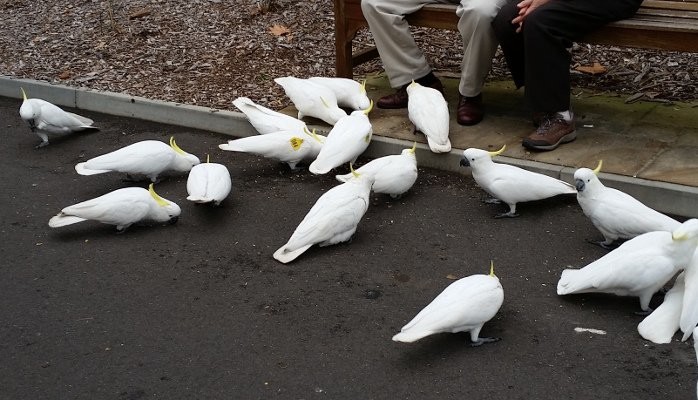
Amplify Festival 2015, June 2nd - Designing the Future
Stuart Candy opened the first day of Amplify Festival 2015, asking us to consider how we think about the future. When we are asked to think, “What will the future look like?”, we often find ourselves lost by the many open possibilities. As Director of the Situation Lab, Foresight & Design professor at OCAD University, Canada, and a Fellow of The Long Now Foundation, Prof. Candy teaches ways we can create a scaffolding to guide our minds, as I describe in more detail my recent Forbes post, Playing the Futurist’s Game. He believes we all need some practice in looking at the future: “What I’m suggesting is a resilient society that is distributed, a bit more critical and creative about where these ideas of the future coming from.”
Genevieve Bell, VP & Fellow at Intel, gave a very entertaining look at 7 new challenges and opportunities for the world. They are almost paradoxes or dualities about the complexity of how we think and feel about our world. For example, in today’s world, we all want to share with each other, yet we worry about our reputations and what people think of us. As she described, the trailing edge of Millennials are much more concerned about privacy than their older siblings of the same generation. It explains why many of them use communications tools such as Snapchat or YikYak with more controls over their openness, versus siblings who use Twitter.
She also explained how the perception today around Big Data is the meme that ‘More Data equals More Truth’. She thinks we more data simply is that, more data. A very real observation she made: We are all for transparency, but we like our secrets. We exist with that duality where we call for it, but also where we seek refuge in keeping some information from others as we choose. Likewise, we like our secrets but also everyone lies. “The average person lies 6 – 200 times a day.” It matters what we share but keep this in mind as well.
Lorna Ross, Director of Design at the Mayo Clinic Center for Innovation, shared many examples of what she and her team learned about designing for the future of healthcare. To begin, one key observation about trends she made: “Your competition will not be the same product but one with the same effect.” If you are only looking at your known competitors who make the same product or are in the same category, then you may miss how someone else possibly from an entirely different industry may replace it. The key is to consider the utility, and the design of how it fits into people’s lives and activities.
“Patients often do things we consider deviant. They’re doing what they want to get out of the system. Don’t pay attention to what you want them to do, but what they actually do.” In this case, patients are working around the system, deviating from the expected process. The key to design is to follow their path.
Lorna Ross: “Design is not about the finite and absolute solution. Design is like scaffolding.” It is seeking transitional products and tools that bridge the innovation gap like training wheels (e.g. use this for a week and then you can stop using it).
Jon Matonis, most recently the head of the Bitcoin Foundation, and now an independent advisor and board member of various startups gave an overview of how Bitcoin impacts the basis of legal tender currencies. He opened with a video of how bitcoins were used in Argentina during a time of rapid inflation and closed foreign exchange trading. Because gold or the dollar was not available to the public, individuals started using bitcoins to store value.
“Bitcoin doesn’t just represent small fee payments like Visa or Mastercard. It represents a bottom up consensus for value, rather than top down national currencies,” said Mr. Matonis. When you consider that the Bitcoin network now has a 1000x more computational power than the top five supercomputers of the world, the investment in this system, the properties of bitcoin currency itself (privacy, immediate settlement, transaction irreversibility, minimal traceability, and fungibility), he sees a stable, practical and international new system ready for the world.
See all the days at Amplify Festival:
- June 1st - Innovation management (Dr. Norman Lewis, PwC), Video surveys (Matthew Barnett, Verbate)
- June 2nd - Futurism (Stuart Candy, U of Toronto), Healthcare Design (Lorna Ross, Mayo Clinic), Bitcoin (Jon Matonis)
- June 3rd - Ecosystems (John Hagel, Deloitte), Company Transformation (Sanjay Purohit, Infosys), and Strategy Planning (Simon Wardley, LEF)
- June 4th - Innovating Publishing (Paul Cameron, Booktrack), Education (Heather McGowan), Long-term Innovation (James Moody, Sendle)
- June 5th - Aging (Michael Hodin, Ruth Finkelstein, Ken Smith, Mark Halverson)
Rawn Shah is a Director & Social Business Architect with Rising edge, an independent consultancy focused on work culture, collaboration, and the future of work. He is also Partner at Ethos VO, Ltd., the innovation networked organisation in the UK. He is based in Tucson, Arizona, USA, and can be reached on Twitter, or LinkedIn.